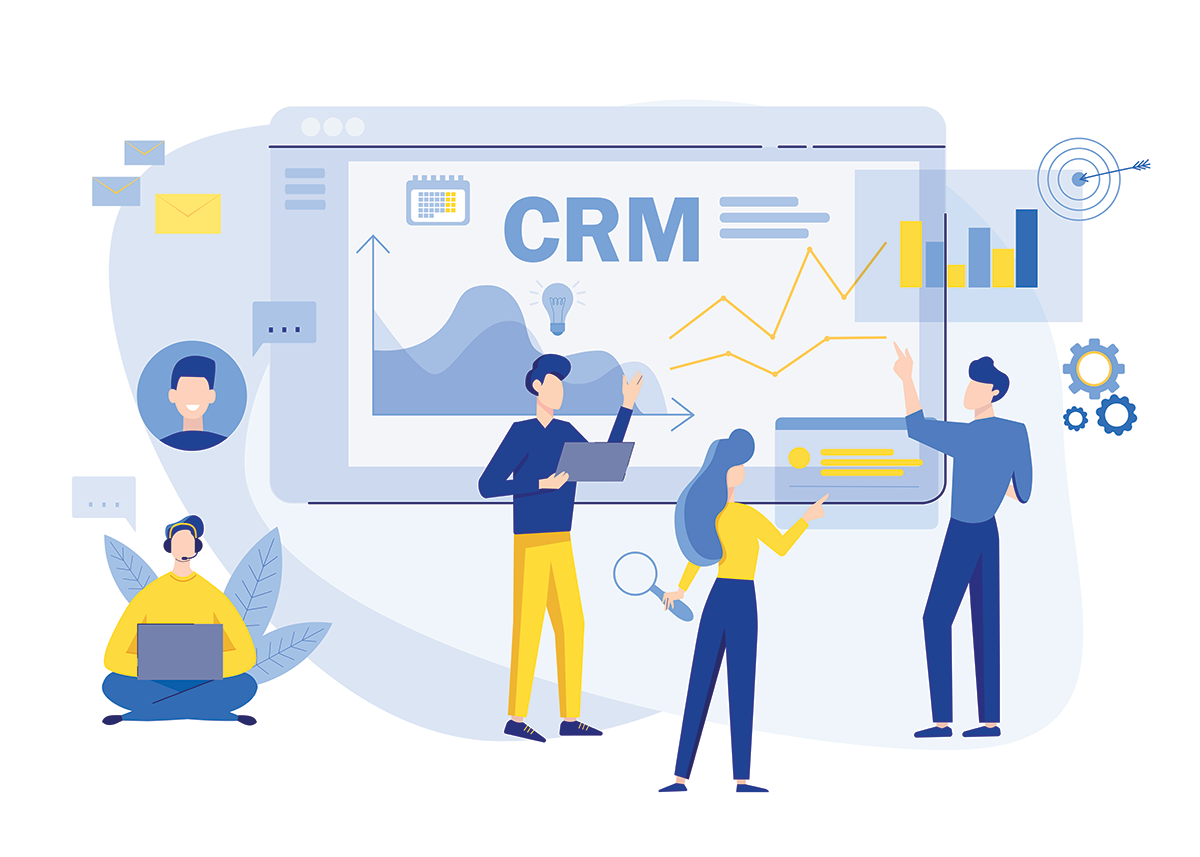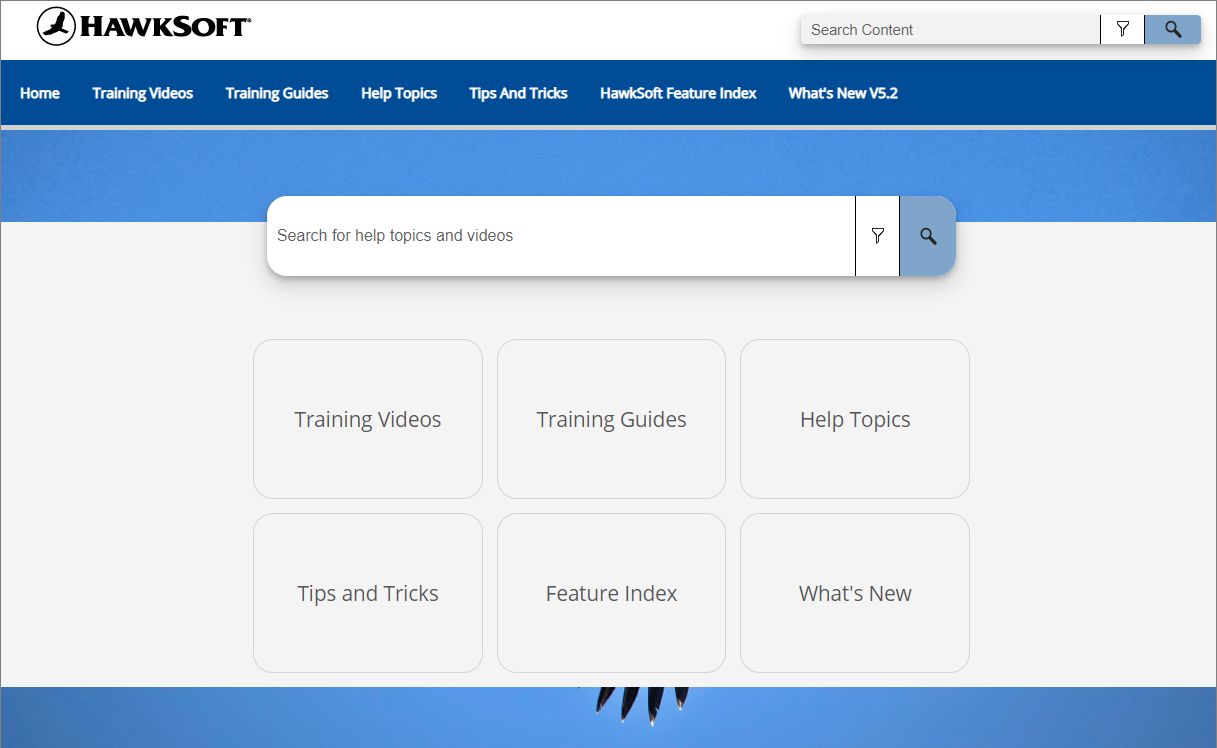Guest blog by InsuredMine
Guest blogs are written by contributors outside of HawkSoft. The participants' views are entirely their own and may not reflect the views of HawkSoft.
In the dynamic world of insurance, staying competitive demands more than conventional methods. Independent insurance agents are increasingly turning to technology to streamline operations and elevate client experiences. The integration of Customer Relationship Management (CRM) systems with data analytics is transforming the industry.
These tools empower agents to improve customer relationships, make informed decisions, and drive growth. In this article, we'll delve into the advantages of integrating CRM with data analytics and share actionable strategies for agents to enhance efficiency.
In this article:
- What's the difference between a CRM and an AMS?
- How CRMs revolutionize independent agencies
- Unlocking the power of data analytics
- Actionable steps for agents
- Evolve with an integrated CRM
What’s the difference between a CRM and an AMS?
Agents are sometimes unclear on the difference between a CRM (customer relationship management) and an AMS (agency management system), and the benefits each one provides. Agency Management Systems (AMS) focus on operational efficiency, including policy management, carrier downloads, task management, and more. While an AMS typically provides basic contact management, CRMs focus more fully on customer engagement, providing robust workflows for sales pipeline tracking and automated customer communications.
Having a CRM that integrates with the data in your AMS eliminates data silos, ensuring seamless workflows. This unified solution allows independent agents to provide exceptional client experiences while optimizing backend processes.
How CRMs revolutionize independent agencies
Here are some of the most important ways a CRM can help independent insurance agencies succeed.
Building comprehensive customer profiles
A robust CRM system, like InsuredMine, gathers and centralizes client data from multiple touchpoints. This holistic view equips agents with the insights needed to deliver personalized communications and timely solutions. By understanding each client’s unique preferences and needs, agents can foster trust and long-term loyalty.
Enhancing retention and driving renewals
CRMs play a critical role in client retention and policy renewals. Automated reminders and personalized follow-ups ensure agents can proactively manage policy expirations, reducing churn. Furthermore, they enable agents to identify cross-selling and upselling opportunities, helping clients discover new products that align with their evolving needs.
Unlocking the power of data analytics
Data analytics empowers insurance agencies to go beyond surface-level understanding and unlock deeper insights about their clients. By analyzing historical data, agencies can predict future trends and behaviors, enabling them to proactively address client needs. For example, agencies can identify which clients might be nearing policy lapse and take measures to retain them with personalized outreach. This ability to forecast challenges and opportunities makes data analytics an invaluable tool in driving efficiency and customer satisfaction.
Predictive analytics
Predictive analytics plays a crucial role in optimizing operations. Through predictive modeling, agencies can anticipate risks and allocate resources more effectively. For instance, if data reveals a rise in claims from specific regions, agencies can prepare by enhancing support for those areas. Additionally, predictive analytics improves decision-making in marketing by highlighting which campaigns are most likely to resonate with target audiences, ensuring every effort yields maximum results.
Segmentation
Another transformative aspect of data analytics is its ability to improve segmentation. By analyzing demographic, behavioral, and transactional data, agencies can create finely tuned customer profiles. These profiles enable agents to group clients by preferences, life stages, or financial goals, making it easier to craft targeted communication strategies. This personalized approach not only enhances customer experiences but also strengthens loyalty.
Visualization tools
Visualization tools add an extra layer of sophistication to analytics. Dashboards displaying charts, graphs, and reports simplify complex data, allowing agents to understand trends at a glance. Whether monitoring retention rates, claims processing efficiency, or sales pipeline performance, visualization tools ensure that agents can quickly interpret data and make informed decisions. This seamless access to actionable insights creates a competitive advantage for agencies.
Case studies that show results
Here are a few case studies from InsuredMine that demonstrate how independent agencies have improved their business or operations with the use of a CRM and data analytics.
Client Retention with Predictive Analytics
Using predictive tools, an agency identified customers likely to leave and launched personalized outreach campaigns. The result? A 25% increase in client retention.
Streamlining Claims with Automation
Integrating CRM and AMS reduced errors and sped up claims processing times by 30%, delighting clients and improving operational efficiency.
Actionable steps for agents
Here are two things agents can do to ensure a CRM will add value to your agency.
Identify KPIs to track success
To thrive in the competitive insurance industry, independent agents must identify relevant Key Performance Indicators (KPIs) that serve as benchmarks for success. Metrics such as client retention rates, renewal percentages, and claims processing times are crucial for evaluating the effectiveness of strategies and operations. By analyzing these KPIs, agents can pinpoint areas for improvement and capitalize on their strengths. Tracking these metrics consistently empowers agents to make data-driven decisions, which ultimately enhance client satisfaction and drive business growth.
Run a pilot project as a test
Launching new tools and strategies can often seem daunting, but starting with a pilot project can simplify the process and minimize risks. Independent agents can test analytics and CRM tools with a subset of their data, allowing them to observe results in a controlled environment. This approach provides valuable insights into what works and what doesn’t, enabling agents to refine methods before scaling successful initiatives across their business. A pilot project ensures a smoother transition, equipping agents with confidence to integrate innovations without disrupting existing workflows.
Evolve with an integrated CRM
The use of integrated Customer Relationship Management (CRM) systems and advanced data analytics is no longer an optional luxury; it is a necessity. These technologies enable independent insurance agents to forge stronger, more meaningful relationships with their clients by offering personalized solutions and timely communication. Data analytics provide deeper insights into client behavior and market trends, helping agents predict needs and proactively address concerns. With these tools, agencies can streamline processes, optimize resource allocation, and maintain a competitive edge in an ever-evolving market.
By adopting integrated CRM systems and leveraging data analytics, independent insurance agencies position themselves for sustainable growth and long-term success. Such technologies not only help agents stay ahead of competitors but also ensure adaptability to industry changes. As agencies embrace these innovations, they can enhance efficiency, improve client experiences, and build lasting trust—critical factors that contribute to their growth and resilience in the face of challenges. Investing in CRM systems and analytics is ultimately an investment in the future of their business.
Transform your agency's operations with InsuredMineFrom seamless CRM functionalities to insightful analytics tools, InsuredMine is your partner in achieving efficiency and excellence. |







